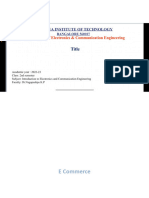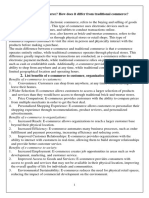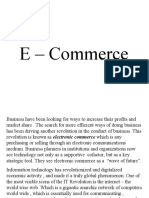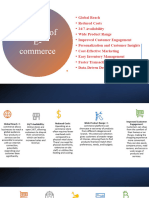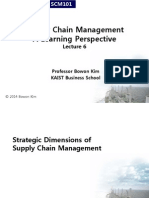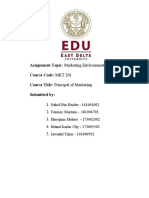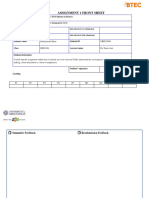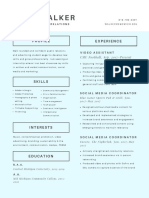0% found this document useful (0 votes)
44 views7 pagesIt Unit 4 (Htmlunit4)
The document provides a comprehensive overview of e-commerce, including its definition, key concepts, types, advantages and disadvantages, and the technologies that facilitate it. It also discusses the relationship between the internet and e-business, the feasibility and constraints of e-business, and the challenges of e-transition for Indian corporations, along with the legal framework established by the Information Technology Act 2000. The IT Act is highlighted as a crucial legislation that supports electronic transactions and e-commerce in India by ensuring legal recognition, data protection, and cybercrime regulation.
Uploaded by
joworo5950Copyright
© © All Rights Reserved
We take content rights seriously. If you suspect this is your content, claim it here.
Available Formats
Download as PDF, TXT or read online on Scribd
0% found this document useful (0 votes)
44 views7 pagesIt Unit 4 (Htmlunit4)
The document provides a comprehensive overview of e-commerce, including its definition, key concepts, types, advantages and disadvantages, and the technologies that facilitate it. It also discusses the relationship between the internet and e-business, the feasibility and constraints of e-business, and the challenges of e-transition for Indian corporations, along with the legal framework established by the Information Technology Act 2000. The IT Act is highlighted as a crucial legislation that supports electronic transactions and e-commerce in India by ensuring legal recognition, data protection, and cybercrime regulation.
Uploaded by
joworo5950Copyright
© © All Rights Reserved
We take content rights seriously. If you suspect this is your content, claim it here.
Available Formats
Download as PDF, TXT or read online on Scribd
/ 7
















